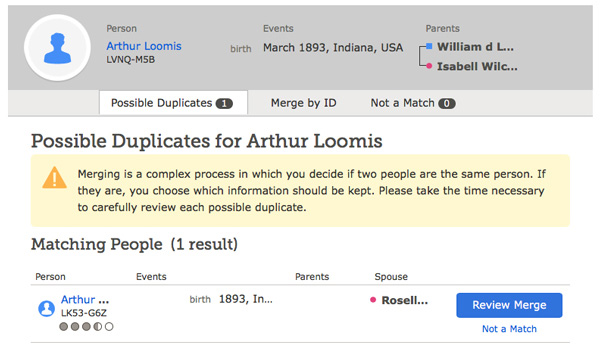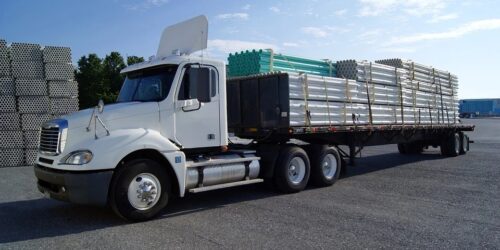Inside the Guide: Merging Duplicates on FamilySearch
Merging duplicates on FamilySearch is an important process that should be done very carefully and thoroughly.  Before merging, you take two separate entries and analyze them to see whether they represent the same person. If you merge two entries together who were not the same person, that can be fixed; however it can also create discrepancies in your FamilySearch Family Tree that will need to be resolved. If you don’t merge two entries together who were the same person, it can also create some gaps and discrepancies in research. However, you don’t need to let the importance of merging scare you away: you can assist in your family history by becoming confident and comfortable with the process of merging duplicates.
Before merging, you take two separate entries and analyze them to see whether they represent the same person. If you merge two entries together who were not the same person, that can be fixed; however it can also create discrepancies in your FamilySearch Family Tree that will need to be resolved. If you don’t merge two entries together who were the same person, it can also create some gaps and discrepancies in research. However, you don’t need to let the importance of merging scare you away: you can assist in your family history by becoming confident and comfortable with the process of merging duplicates.
If you are unsure of how to merge duplicates or are new to the merging process, check out the link at the end of the article. It points to the section in The Family History Guide with step-by-step instructions and tips for merging duplicate records.
Points to Remember
Assuming you already know the basics of how to merge, here are some key things to remember as you merge duplicates on FamilySearch:
- Keep in mind why merging is important. Merging is important for a variety of different reasons. One of the most important reasons is to ensure accuracy in family history research. Getting rid of a duplicate person means that people will not be building family lines off of two versions of the same person. Merging duplicates also means that the sources and information found on both entries are combined to one entry. This combination of sources and information helps to ensure that the entry for the individual is the most complete and accurate it can be.
- Pay close attention to the details. Make sure you look closely at every detail for each entry and compare them to each other. Just because someone has the same name and was born the same year does not guarantee they were the same person. You need to look for other details to support that conclusion.
- Check Relationships. Millions of people share the same name, and millions more share the same birth date. The thing that really makes a person unique is his or her relationships. For example, you are the only person who is a child to your parents, who is also married to your spouse, who is also a parent to your children. Take a look at the parents, spouses, and children on both entries to see if they are similar or completely different. The relationships can provide a key into deciding whether or not the entries are the same.
- Siblings with the same name. Don’t automatically assume that siblings who have the same parents and the same name are the same person. In some cultures, when an older sibling would die, parents would name a baby the same name as the child who passed away. In these instances, pay very close attention to the birth and death years of each entry.
- Do a little more research. Look at the sources on each entry, do they complement each other or do they contradict each other? If two individuals with a similar name are being compared, try looking for both of them on the census with the information that is provided. If they are both on the census at the same time, living with different people, they can’t be the same individual.
- Look again later. If you are a little hesitant to merge because it seems like some details may not add up, try taking a break and looking at it again later. Having fresh eyes can help you notice details you may have missed before.
- Don’t be afraid to merge. Merging can be a little intense and intimidating. However, if you are truly confident that the two entries are the same person, don’t just leave it for someone else to take care of; go ahead and merge them! You’ll save yourself and others time and energy later.
For additional information on merging duplicates on FamilySearch, check out the The Family History Guide, FamilySearch, Project 1, Goal 11: Merge duplicate ancestors in your tree.






